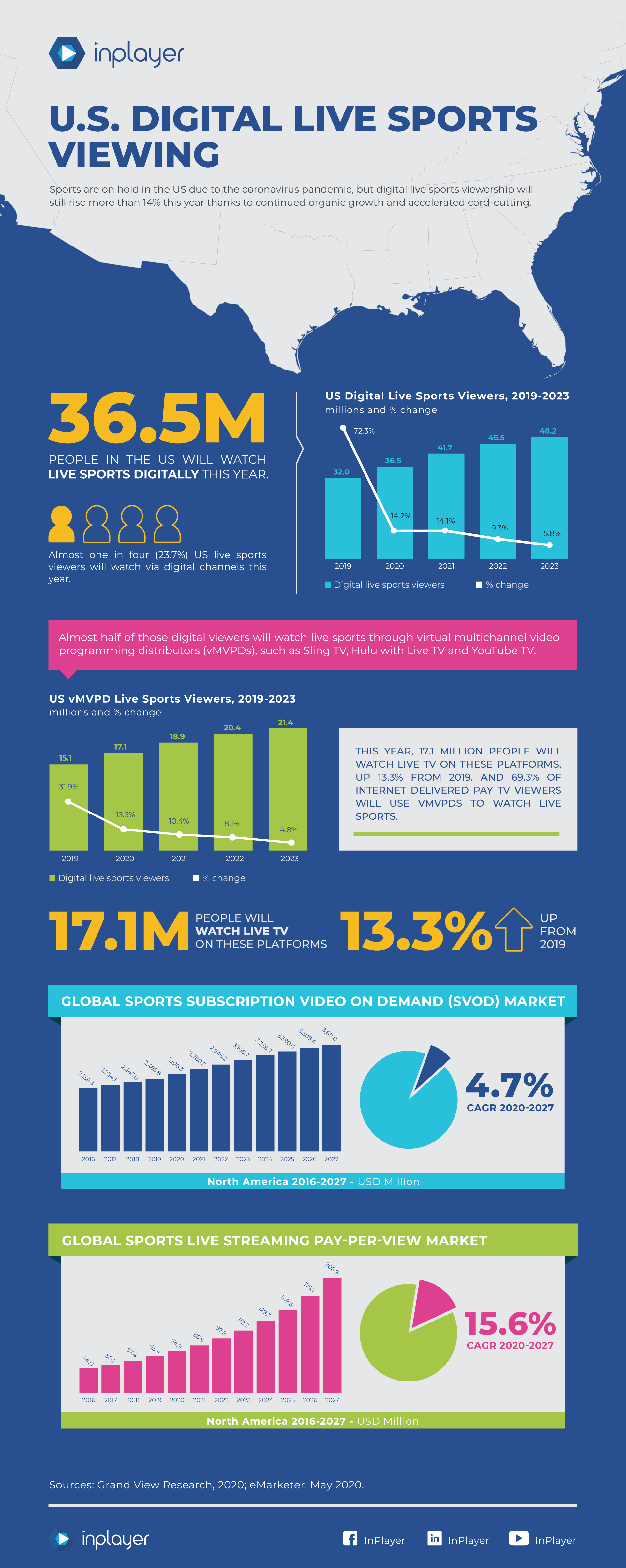Sports on TV: Are We at a Pivotal Moment?
The opportunities for second-screen engagement are just beginning

Recently, we’ve all been forced to re-think much of our everyday lives—how we work, how we play and everything in between. In the face of a pandemic, our health, our families and our livelihoods come first. But we still crave our old customs: a meal, a movie, a ballgame. Now, when we need them most, we miss our distractions.
Sports in this moment may feel like an all-too-guilty pleasure. But for so many of us, they are a balm. At a time when the usual routines have been disrupted, the familiar rhythms of our games provide relief. The NBA and NHL have returned to play. Major League Baseball ultimately moved forward with its season. Boxing, UFC and the PGA are again holding events, and the NFL expects to kick off its season in September as planned. In many ways, major-league spectator sports appear to be conducting business as usual, except for one thing: no spectators.
HUNGRY FOR COMPETITION
Still, all those empty seats at stadiums and arenas across the country should not be misinterpreted as a lack of public interest. If anything, the audience of consumers hungry for sports content is more ravenous than ever. According to eMarketer’s forecast on digital sports viewers, 36.5 million people in the U.S. will watch live sports digitally this year. And thanks to continued organic growth and accelerated cord-cutting, digital live sports viewership is set to rise more than 14% in 2020. For sports properties seeking new ways to engage viewership, or options for better leveraging existing channels, the current moment should be considered as a pivotal one.
Even before the spring sports shutdown, fans on- and off-site had demonstrated a revealing trend to over-the-top media services: idle hands. Whether standing in front of the live action or seated on the couch at home, sports viewers are increasingly engaging with second-screen companions. Messaging friends. Checking fantasy scores. Buying concessions. Participating in trivia. Watching highlights. Fans from all generations are using devices—sometimes second and even third screens—to amplify their sports enjoyment. The games, they’ve discovered, are a gateway to additional entertainment. Fans don’t turn their attention from the field to their phone because they’re bored. They love the experience. They just want more of it.
Today’s advances in technology, shift in the consumption of sports and its offerings are empowering fans to stay connected from home. Scarcity and premium VIP experiences can keep demand high, regardless of price. Fans are willing to pay to watch games of their favorite team or subscribe to a seasonal membership.

FAN FIRST
The opportunities for OTT providers are obvious, especially at a moment when fans are arguably as thirsty for sports as they’ve ever been. This increase in digital engagement is likely to continue. Leagues and teams have started to recognize that need, underscoring that notion.
But the competition to capture that second-screen audience is already on. Sports organizations are now asking a litany of questions: how do teams keep supporters engaged with “fan-first” digital experiences? What’s the best way to offer relevant digital pay-per-view or subscription packages? How can organizations generate digital revenue?
Sports organizations now have the opportunity to take control and build stronger direct connections with their fan base. That’s all happening online—using “Netflix-style” sports channels. Regarding smartphones, tablets and Apple watches: media properties and the leagues themselves are hustling to be the first (and best) source of content on these devices, and they’re beginning to learn how to monetize those offerings.
PLUS: Recreating the Sports Fan Experience Virtually
To earn back some of the lost revenue at the gate, sports organizations at all levels are looking to live stream their games or competition online—behind closed doors—enabling fans to do so with a “digital ticket.” By selling these digital tickets using pay-per-view or subscription functionalities, it not only keeps the supporters connected and engaged with clubs but also guarantees income until fans can return to stadiums.
The industry bigwigs aren’t alone, either. OTT entities could learn a lesson from the grassroots creators. On Twitter, for instance, ESPN reporter Adrian Wojnarowski (@wojespn) has turned breaking NBA news into a cottage industry. Animators have parlayed original, sports-themed shorts into massive viewer numbers on Instagram. TikTok may be the latest blockbuster medium for content ranging from highlights to interviews to news, commentary and who-knows-what’s-next.
Secondary screen engagement is here to stay, and it will be those OTT properties with both the content that most resonates with fans and the will to deliver it to them that finish ahead in this market. The public awaits.
George Meek is CEO of InPlayer, a leading monetization and subscriber management platform with more than 400 customers worldwide. George has almost two decades of experience selling broadcast technology and almost as long operational experience in scaling high-growth technology companies.
Get the TV Tech Newsletter
The professional video industry's #1 source for news, trends and product and tech information. Sign up below.

